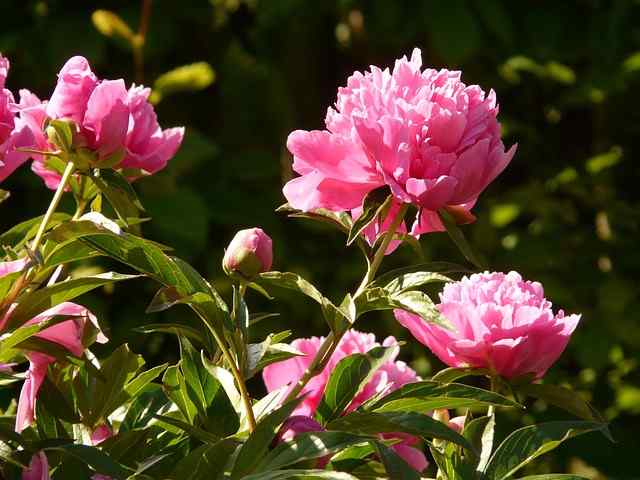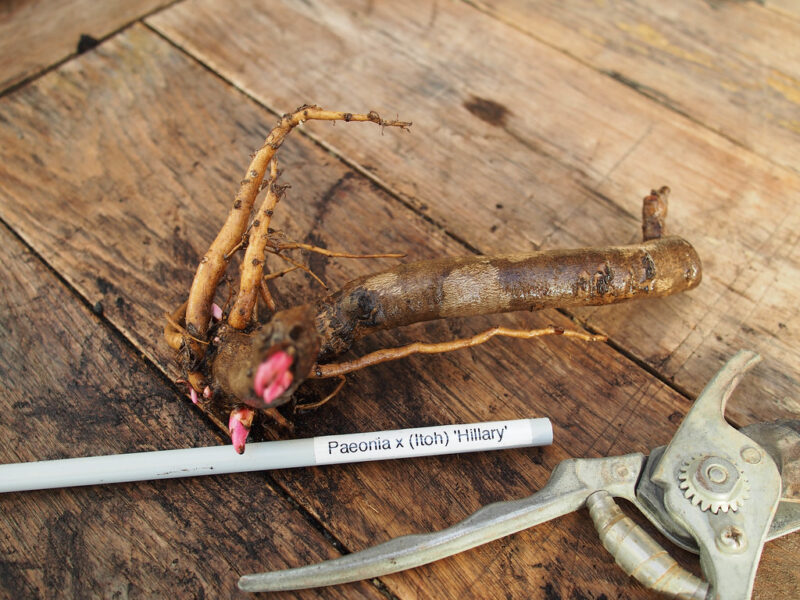In this post, we will dig into the particulars of peony growth, how they propagate, and the best practices for managing their spread in your garden.
A Closer Look at Peonies

Before addressing the question of spreading, let’s explore what makes peonies such beloved garden flowers. Peonies belong to the genus Paeonia and are native to Europe, North America, and parts of Asia, with over 30 species and numerous hybrids available in various colors and forms.
Types of Peonies
Peonies primarily fall into three categories: herbaceous, tree, and intersectional.
Herbaceous Peonies: These are the most common type, dying back to the ground each winter and returning in the spring. They are known for their lush, fragrant flowers and bushy foliage.
Tree Peonies: As the name suggests, these peonies are woody shrubs. They have large blooms but do not die back in winter, providing visual interest year-round.
Intersectional Peonies: These hybrids combine the best traits of herbaceous and tree peonies, featuring the characteristics of both types. They are typically more resilient and can produce flowers consistently.
Understanding the types of peonies helps in planting and caring for them, as the care requirements may vary. However, regardless of type, they generally offer reliable blooms in spring and early summer.
The Growth Habit of Peonies: Do They Spread?

Now we come to the crux of the matter—do peonies spread? The simple answer is both yes and no. Peonies are known for their relatively slow growth and expansion, unlike other fast-spreading perennials, such as daylilies or hostas.
How Peonies Grow
Peonies grow from a network of underground structures known as rhizomes. These rhizomes can be thought of as storage organs that not only nourish the plant but also enable it to form new growth year after year. Over time, these rhizomes can develop into larger clusters, which makes it seem like they are spreading. However, this growth is typically gradual and controlled.
Natural Spread vs. Cultivated Borders
In nature, peonies can spread to a certain extent as they produce offsets and new shoots from their rhizomes. In a cultivated garden setting, the spread of peonies largely depends on several factors, including soil conditions, sunlight, water availability, and care practices. Without competition from other plants or environmental stressors, peonies can grow more vigorously, creating a denser appearance in garden borders.
Factors That Influence Peony Spread

Understanding the factors that influence the spread of peonies can help you manage your garden space more effectively.
1. Soil Quality
Peonies thrive in well-drained soil with a pH level between 6.0 and 7.0. Rich, loamy soil with ample organic matter encourages healthy growth and can lead to more vigorous rhizome development.
2. Light Requirements
These beautiful plants prefer full sun, which means at least six hours of direct sunlight each day. Extra sunlight not only helps with flowering but can also stimulate the growth of rhizomes beneath the soil, encouraging a more robust spread.
3. Watering Practices
While peonies are relatively drought-tolerant once established, they do need consistent moisture during their growing season. Inadequate watering can hinder rhizome development and spread, while excessive moisture can lead to root rot or fungal diseases.
4. Care Practices
Regular maintenance, including deadheading spent blooms, cutting back foliage in the fall, and applying mulch, can help support the plant’s vigor. Overly aggressive pruning, however, can hinder its natural growth and spread.
Encouraging the Spread of Peonies

If you’re enthusiastic about allowing your peonies to spread within a controlled environment, there are several practices you can implement to encourage this process.
Dividing Peonies
One of the most effective ways to propagate peonies and allow them to spread over time is through division.
When to Divide: The best time to divide peonies is in early fall, after the foliage has died back but before the ground freezes. Some gardeners prefer to divide in spring, just as new growth is emerging.
How to Divide: To divide peonies, carefully dig up the entire plant using a spade or garden fork. Shake off excess soil and cut the rhizomes into sections that are at least three to five eyes each. Replant these divisions immediately or store them in a cool, dry place until you’re ready.
Spacing: When replanting peonies, ensure to space them at least three feet apart to allow for optimal growth and airflow.
By following these division methods, you can help peonies spread in your garden while also creating new plants to gift or expand your floral display.
Companion Planting
Companion planting is another excellent way to create a robust flower garden while allowing peonies to thrive. Pairing your peonies with plants that can complement their needs—like delphiniums, foxgloves, or irises—can enhance their visual appeal while allowing them to establish themselves without overcrowding.
Managing Peony Spread and Space Considerations

Peonies do have a tendency to create larger clumps over time, so it’s essential to manage their spread, especially in smaller gardens.
Understanding Clumping and Growth
While peonies will not spread aggressively like ground covers, they can become a bit crowded in specific growing conditions. Understanding that peonies grow in clumps can help you plan where to plant them effectively. As these clusters grow, the middle may produce fewer flowers due to lack of sunlight and air circulation, thus necessitating occasional division.
The Role of Mulch
Using mulch in your peony beds not only helps retain moisture but can also suppress weeds and prevent competition for nutrients. Organic mulches, like shredded bark or straw, decompose over time, enriching the soil while ensuring the peony clumps maintain their form and have room to spread slowly without becoming too crowded.
Common Myths About Peonies and Their Spread

As with many garden plants, misinformation can abound. Here are some common myths regarding peonies and their growth patterns:
Myth 1: Peonies Are Invasive
Contrary to popular belief, peonies are not invasive plants. They do not spread aggressively or take over garden spaces. Instead, they maintain a slower growth pace which, when managed correctly, can create a beautiful arrangement in your garden with adequate spacing.
Myth 2: Peonies Can’t Be Transplanted
Many believe that transplanting peonies is problematic due to their long taproots. While it can be challenging, it’s certainly possible to transplant peony clumps if done with care, especially when divided properly. The establishment will depend on the care provided after transplanting.
Myth 3: Peonies Don’t Produce Seeds
While peonies mainly propagate via their rhizomes, it is possible for them to produce seeds after flowering. However, nurturing peonies from seeds is a long process and may not produce flowers for several years.
Conclusion
In summary, peonies do spread, but the process is typically slow and controlled through rhizome development. They require proper care, maintenance, and environmental conditions to thrive and expand. With thoughtful planting, division, and companion planting, you can manage their spread effectively while enhancing the beauty of your garden.





